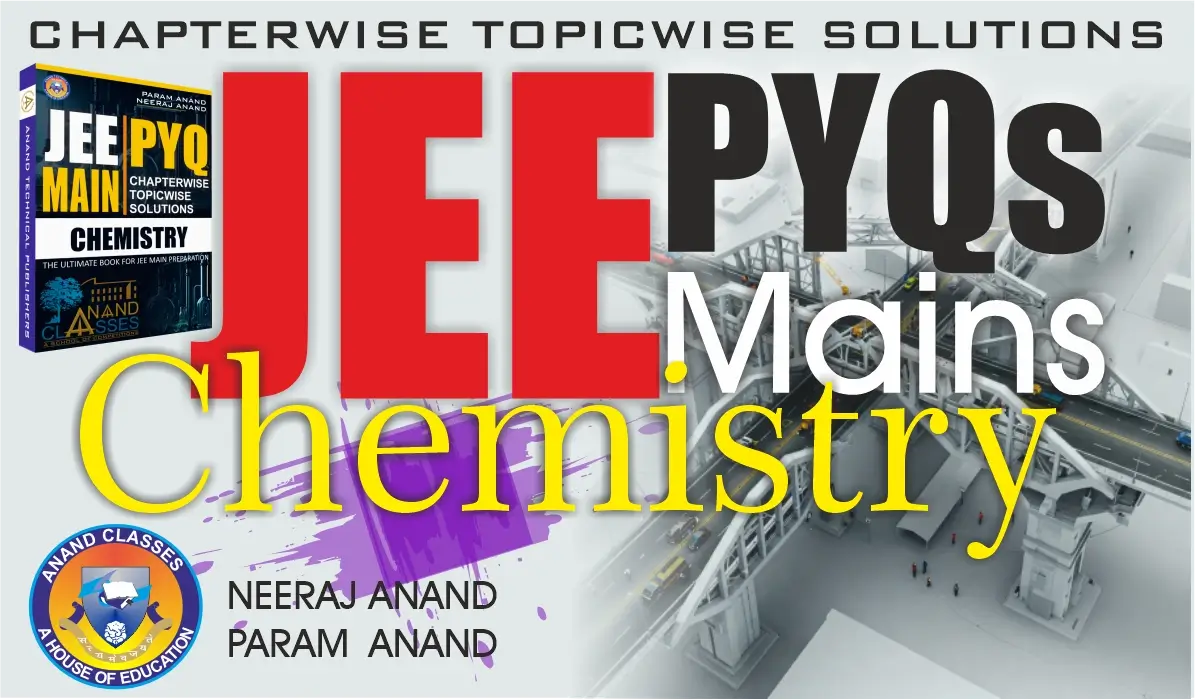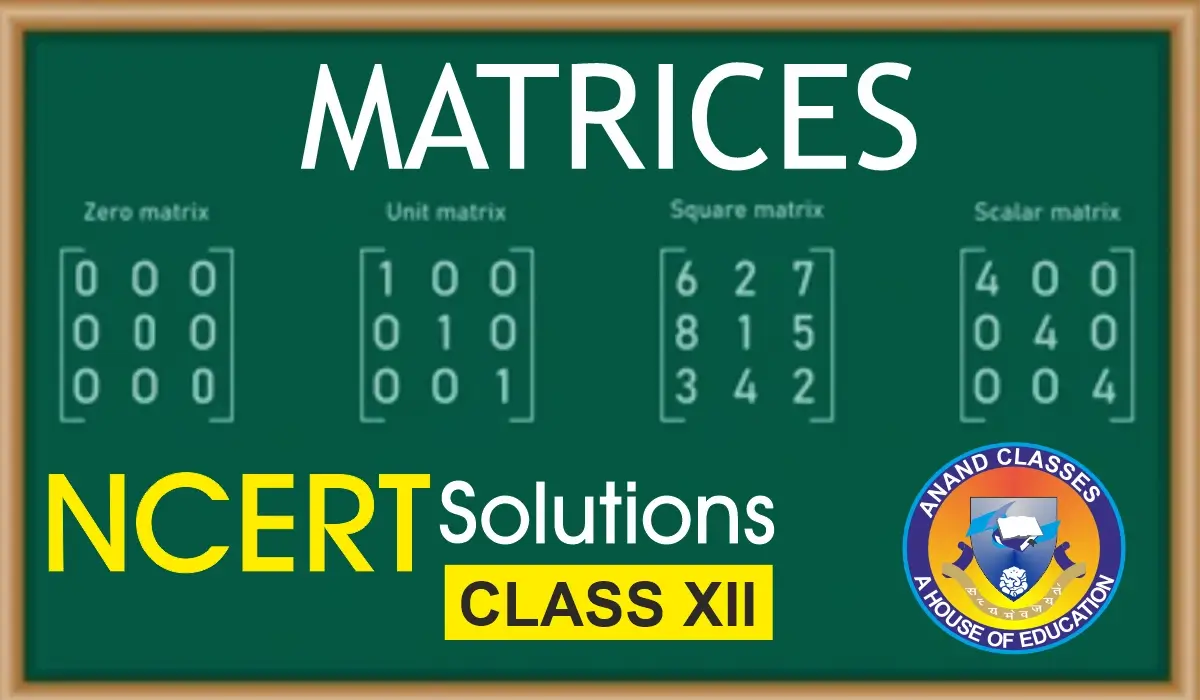Anand Classes offers the Most Expected JEE Main PYQs Periodic Table MCQs With Solutions PDF Download to help students focus on high-yield questions and prepare strategically for the exam. This PDF contains carefully selected multiple-choice questions from previous years’ papers along with detailed solutions that cover essential concepts from the Periodic Table topic in Class 11 chemistry. It’s an ideal resource for revision, practice, and strengthening problem-solving skills. Click the print button to download study material and notes.
JEE Main 2024 Question :
Given below are two statements:
Statement I: The 4f and 5f series of elements are placed separately in the Periodic Table to preserve the principle of classification.
Statement II: S-block elements can be found in pure form in nature.
Choose the most appropriate answer from the options given below:
A: Statement I is false but Statement II is true
B: Both Statement I and Statement II are true
C: Statement I is true but Statement II is false
D: Both Statement I and Statement II are false
Answer / Correct Option:
$$\text{C: Statement I is true but Statement II is false}$$
Step 1: Analyze Statement I
The 4f (lanthanides) and 5f (actinides) series are indeed placed separately at the bottom of the Periodic Table.
- This is done to maintain the principle of classification and preserve the periodicity of properties.
- If included within the main body, the table would become extremely wide and lose structural integrity.
Thus, Statement I is true.
Step 2: Analyze Statement II
S-block elements (alkali metals and alkaline earth metals) are highly reactive.
- Alkali metals (Li, Na, K, etc.) and alkaline earth metals (Ca, Mg, etc.) easily lose their valence electrons.
- Due to this reactivity, they are never found in pure elemental form in nature, but occur as compounds like salts, ores, and minerals.
Thus, Statement II is false.
Step 3: Compare and conclude
- Statement I is true
- Statement II is false
Correct answer is option (C).
Final Answer:
$$\boxed{\text{Statement I is true but Statement II is false}}$$
Concept Takeaway:
The separate placement of lanthanides and actinides maintains the logical structure of the Periodic Table. S-block elements, due to their high reactivity, exist only in combined states, not in pure form. These points are crucial for JEE Main preparation in Class 11 Chemistry, especially in the Periodic Classification of Elements chapter and for understanding conceptual PYQs with explanations from Anand Classes.
JEE Main 2023 Question:
Which of the following statements are not correct?
(A) The electron gain enthalpy of F is more negative than that of Cl.
(B) Ionization enthalpy decreases in a group of periodic table.
(C) The electronegativity of an atom depends upon the atoms bonded to it.
(D) Al₂O₃ and NO are examples of amphoteric oxides.
Choose the most appropriate answer from the options given below:
(A) A, B, C and D
(B) A, C and D only
(C) A, B and D only
(D) B and D only
Answer : Correct Option: (B) A, C and D only
Step 1: Concept of Electron Gain Enthalpy
Fluorine is more electronegative, but its small atomic size causes high electron-electron repulsion. Hence, its electron gain enthalpy is less negative than that of chlorine. Statement (A) is incorrect.
Step 2: Concept of Ionization Enthalpy
As we move down a group, atomic radius increases and the outer electrons experience less effective nuclear charge. This makes ionization easier. Hence, ionization enthalpy decreases in a group. Statement (B) is correct.
Step 3: Concept of Electronegativity and Oxides
Electronegativity depends on the surrounding atoms and hybridization state. Hence, statement (C) is correct.
Al₂O₃ is amphoteric, but NO is a neutral oxide. Therefore, statement (D) is incorrect.
Final Answer
$$ \boxed{(B) \ A, \ C \ \text{and} \ D \ \text{only}} $$
Concept Takeaway
- Fluorine vs Chlorine: Chlorine has more negative electron gain enthalpy than fluorine.
- Periodic Trends: Ionization enthalpy decreases down a group.
- Oxides: Al₂O₃ is amphoteric, NO is neutral.
- This question is important for JEE Chemistry – Periodic Properties of Elements.
- For more preparation, refer to Anand Classes notes, PYQs, Class 11 Chemistry, Periodic Trends chapterwise study material.
JEE Main 2023 Question:
For elements B, C, N, Li, Be, O and F, the correct order of first ionization enthalpy is
(A) Li < Be < B < C < O < N < F
(B) B > Li > Be > C > N > O > F
(C) Li < Be < B < C < N < O < F
(D) Li < B < Be < C < O < N < F
Correct Answer: (D) Li < B < Be < C < O < N < F
Step 1: General Trend
Ionization enthalpy generally increases across a period due to increasing nuclear charge and decreasing atomic radius.
Step 2: Exception – Be vs. B
Beryllium (Be) has a stable, fully filled 2s orbital, so it has higher ionization enthalpy than boron (B), which has an electron in the 2p orbital.
Step 3: Exception – N vs. O
Nitrogen (N) has a stable, half-filled 2p subshell, making its ionization enthalpy higher than oxygen (O), which has paired electrons in the 2p orbital causing extra repulsion.
Final Answer
$$ \boxed{Li < B < Be < C < O < N < F} $$
Concept Takeaway
- Across a period, ionization enthalpy increases but exceptions occur due to stable configurations.
- Be > B (full 2s vs. partially filled 2p).
- N > O (half-filled stability).
- Important for JEE Chemistry, Class 11 Periodic Table chapter, and previous year questions (PYQs).
JEE Main 2023 Question:
Given below are two statements: one is labelled as Assertion A and the other is labelled as Reason R
Assertion A: The energy required to form Mg²⁺ from Mg is much higher than that required to produce Mg⁺.
Reason R: Mg²⁺ is small ion and carry more charge than Mg⁺.
In the light of the above statements, choose the correct answer from the options given below.
(A) A is false but R is true
(B) Both A and R are correct but R is NOT the correct explanation of A
(C) Both A and R are correct and R is the correct explanation of A
(D) A is true but R is false
Correct Answer: (C) Both A and R are correct and R is the correct explanation of A.
Step 1: Analyze Assertion A
The energy required to form $\text{Mg}^{2+}$ from Mg is much higher than that required to produce $\text{Mg}^{+}$.
This is correct because the first ionization energy (removing the first electron) is always lower than the second ionization energy (removing the second electron). After the first electron is removed, the resulting $\text{Mg}^{+}$ has a stronger nuclear attraction on the remaining electrons, making the removal of the second electron much more difficult.
Step 2: Analyze Reason R
$\text{Mg}^{2+}$ is a smaller ion and carries more charge than $\text{Mg}^{+}$.
This is also correct. Removal of a second electron increases the effective nuclear charge, reducing ionic radius and making $\text{Mg}^{2+}$ more compact with a +2 charge compared to +1 in $\text{Mg}^{+}$.
Step 3: Relationship between Assertion and Reason
Since the stronger attraction in $\text{Mg}^{+}$ and the smaller size plus higher charge of $\text{Mg}^{2+}$ explain why the second ionization energy is much larger, Reason R correctly explains Assertion A.
Final Answer
$$ \boxed{(C) \ \text{Both A and R are correct and R is the correct explanation of A}} $$
Concept Takeaway
- Second ionization energy > first ionization energy for all elements.
- Smaller cation size and higher charge make electron removal harder.
- Useful concept for JEE Chemistry, Periodic Trends, Class 11 NCERT, Ionization Energy PYQs.
JEE Main 2023 Question:
The correct order of electronegativity for given elements is:
(A) C > P > At > Br
(B) Br > C > At > P
(C) Br > P > At > C
(D) P > Br > C > At
Correct Answer: (B) Br > C > At > P
Step 1: Recall the trend of electronegativity
Electronegativity generally increases across a period (left to right) and decreases down a group (top to bottom) in the periodic table.
Step 2: Compare halogens (Br and At)
Bromine (Br) is above Astatine (At) in Group 17. Since electronegativity decreases down a group,
$$ \text{Br} > \text{At} $$
Step 3: Compare Carbon (C) and Phosphorus (P)
Carbon (C) lies in Period 2 (smaller size, stronger nuclear pull) while Phosphorus (P) lies in Period 3. Hence,
$$ \text{C} > \text{P} $$
Step 4: Arrange all elements together
Combining the trends:
$$ \text{Br} > \text{C} > \text{At} > \text{P} $$
Here are the Pauling electronegativities for the elements:
- Carbon (C): 2.55
- Phosphorus (P): 2.19
- Astatine (At): 2.2
- Bromine (Br): 2.96
Final Answer
$$ \boxed{(B) \ \text{Br > C > At > P}} $$
Concept Takeaway
- Electronegativity increases across a period and decreases down a group.
- Halogens are highly electronegative, while heavier elements like At show lower values.
- Carbon is more electronegative than Phosphorus due to smaller size.
- Important for JEE Chemistry, Periodic Properties, Class 11 NCERT, PYQ trend-based questions.
JEE Main 2023 Question:
Which one of the following elements will remain as liquid inside pure boiling water?
(A) Li
(B) Br
(C) Cs
(D) Ga
Correct Answer: (D) Ga
Step 1: Recall the condition of boiling water
Pure boiling water has a temperature of 100°C. Any element with a melting point below 100°C but boiling point above 100°C can remain as liquid.
Step 2: Check melting and boiling points of each element
- Lithium (Li): Melting point ≈ 180.5°C → Solid in boiling water.
- Bromine (Br): Melting point ≈ -7.2°C, boiling point ≈ 58.8°C → Already vaporizes before 100°C, so not liquid.
- Cesium (Cs): Melting point ≈ 28.5°C → would melt, but reacts violently with water, not stable as liquid.
- Gallium (Ga): Melting point ≈ 29.8°C, boiling point ≈ 2204°C → Stable liquid at 100°C.
Step 3: Decide the stable liquid
Only Gallium (Ga) remains as a liquid at 100°C without reacting.
Final Answer
$$ \boxed{(D) \ \text{Gallium (Ga)}} $$
Concept Takeaway
- Gallium is one of the few metals that can exist as a liquid slightly above room temperature.
- Bromine is liquid at room temperature but boils before water boils.
- Alkali metals like Li and Cs are solids or highly reactive in water, not stable liquids.
- Important for JEE Chemistry, Class 11 periodic properties, melting & boiling point trends, and NCERT-based conceptual questions.
JEE Main 2023 Question:
Group-13 elements react with O₂ in amorphous form to form oxides of type M₂O₃ (M = element).
Which among the following is the most basic oxide?
(A) Al₂O₃
(B) Tl₂O₃
(C) B₂O₃
(D) Ga₂O₃
Correct Answer: (B) Tl₂O₃
Step 1: Understand the general trend of oxides in Group 13
- Group 13 elements include B, Al, Ga, In, and Tl.
- Oxides of elements in this group have the general formula M₂O₃.
- The acid-base character of oxides in Group 13 depends on the metallic character of the element:
- Non-metallic elements → acidic oxides
- Metallic elements → basic oxides
- Elements with intermediate metallic character → amphoteric oxides
Step 2: Analyze each oxide
- B₂O₃ (Boron oxide)
- Boron is a non-metal.
- B₂O₃ is strongly acidic, reacts with water to form boric acid (H₃BO₃).
- Not basic.
- Al₂O₃ (Aluminium oxide)
- Aluminium is a metalloid with intermediate metallic character.
- Al₂O₃ is amphoteric, meaning it can react with both acids and bases.
- It is not strongly basic.
- Ga₂O₃ (Gallium oxide)
- Gallium is more metallic than Al but less than In and Tl.
- Ga₂O₃ is weakly amphoteric → slightly basic in nature.
- Tl₂O₃ (Thallium oxide)
- Thallium is the most metallic element in Group 13.
- Tl₂O₃ is therefore strongly basic, behaves like a metallic oxide, and reacts readily with acids.
Step 3: Apply periodic trend reasoning
- As we move down the group from B → Tl:
- Metallic character increases.
- Acidic nature decreases and basic nature increases.
- Therefore, Tl₂O₃ is the most basic oxide among the options.
Step 4: Summary of acid-base nature of Group 13 oxides
| Element | Oxide | Acid-Base Character |
|---|---|---|
| B | B₂O₃ | Acidic |
| Al | Al₂O₃ | Amphoteric |
| Ga | Ga₂O₃ | Weakly amphoteric / slightly basic |
| Tl | Tl₂O₃ | Strongly basic |
Final Answer
$$ \boxed{(B) \ \text{Tl₂O₃}} $$
Concept Takeaway
- The basic character of oxides increases down Group 13 due to increasing metallic character.
- Boron oxide is acidic, aluminium oxide is amphoteric, gallium oxide is slightly basic, and thallium oxide is strongly basic.
- This concept is crucial for JEE Chemistry, Periodic Properties, Group 13 elements, NCERT notes, and previous year questions (PYQs).
JEE Main 2023 Question:
The difference between electron gain enthalpies will be maximum between:
(A) Ar and Cl
(B) Ne and Cl
(C) Ne and F
(D) Ar and F
Correct Answer: (B) Ne and Cl
Step 1: Recall the concept of electron gain enthalpy
- Electron gain enthalpy (EGE) is the energy change when an electron is added to a gaseous atom.
- More negative EGE → element readily gains an electron.
- Less negative or positive EGE → element resists gaining an electron (like noble gases).
Step 2: Analyze the elements
- Neon (Ne): Noble gas with a full outer shell → very stable → EGE is slightly positive or near zero.
- Chlorine (Cl): Halogen with 7 valence electrons → easily gains 1 electron to complete octet → EGE highly negative.
- Fluorine (F): Halogen, EGE also highly negative, but smaller atomic size causes electron-electron repulsion → slightly less negative than Cl.
- Argon (Ar): Noble gas → EGE near zero, similar to Ne.
Step 3: Compare differences
- Maximum difference occurs between an element with very low/positive EGE and one with highly negative EGE.
- Ne (very low) and Cl (highly negative) give the largest difference.
Final Answer
$$ \boxed{(B) \ \text{Ne and Cl}} $$
Concept Takeaway
- Noble gases resist electron addition, halogens readily gain electrons.
- Maximum electron gain enthalpy difference is between a noble gas and a halogen.
- Important for JEE Chemistry, Periodic Table trends, Electron Gain Enthalpy, Class 11 NCERT, and PYQs.
JEE Main 2023 Question:
Which of the following elements have half-filled f-orbitals in their ground state?
(Given: atomic numbers Sm = 62, Eu = 63, Tb = 65, Gd = 64, Pm = 61)
(A) Sm
(B) Eu
(C) Tb
(D) Gd
(E) Pm
Choose the correct answer from the options given below:
(A) B and D only
(B) A and B only
(C) C and D only
(D) A and E only
Correct Answer: (A) B and D only
Step 1: Recall the concept of half-filled f-orbitals
- Half-filled f-orbitals contain 7 electrons in the f-subshell (f⁷).
- Half-filled and fully-filled subshells are extra stable due to exchange energy and symmetry.
Step 2: Write electron configurations of the elements
- Samarium (Sm, 62): [Xe] 4f⁶ 6s² → Not half-filled
- Europium (Eu, 63): [Xe] 4f⁷ 6s² → Half-filled f-orbital
- Terbium (Tb, 65): [Xe] 4f⁹ 6s² → Not half-filled
- Gadolinium (Gd, 64): [Xe] 4f⁷ 5d¹ 6s² → Half-filled f-orbital (exception due to stability)
- Promethium (Pm, 61): [Xe] 4f⁵ 6s² → Not half-filled
Step 3: Identify elements with half-filled f-orbitals
- Only Europium (Eu) and Gadolinium (Gd) have half-filled f-orbitals.
Final Answer
$$ \boxed{(A) \ \text{B and D only}} $$
Concept Takeaway
- Half-filled f-orbitals confer extra stability to lanthanide elements.
- Gadolinium is an exception where one electron enters 5d to stabilize 4f⁷.
- Important for JEE Chemistry, f-block elements, lanthanides, electron configurations, Class 11 NCERT, and previous year questions.
📚 Buy Study Material & Join Our Coaching
For premium study materials specially designed for JEE, NEET, NDA, and CBSE/ICSE Classes, visit our official study material portal:
👉 https://publishers.anandclasses.co.in/
For NDA Study Material, Click Here
For SSC Study Material, Click Here
To enroll in our offline or online coaching programs, visit our coaching center website:
👉 https://anandclasses.co.in/
📞 Call us directly at: +91-94631-38669
💬 WhatsApp Us Instantly
Need quick assistance or want to inquire about classes and materials?
📲 Click below to chat instantly on WhatsApp:
👉 Chat on WhatsApp
🎥 Watch Video Lectures
Get access to high-quality video lessons, concept explainers, and revision tips by subscribing to our official YouTube channel:
👉 Neeraj Anand Classes – YouTube Channel


